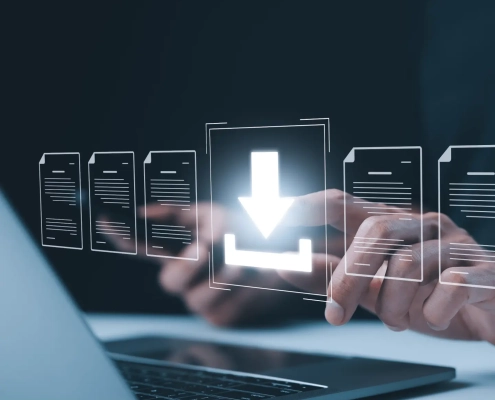China to Enact Medical Device Law
Published on: October 15th, 2024
On August 28, 2024, the China National Medical Products Administration (NMPA) released the draft of the China medical device law, titled “Medical Device Administration Law of the People’s Republic of China (Draft)” (English draft, Original draft), for public comments. This draft law, consisting of 11 chapters and 190 articles, represents a comprehensive update of existing regulations and underscores China’s commitment to enhancing the safety, effectiveness, and innovation of medical devices. This shift marks a transition from regulatory oversight to legal governance for medical devices, reflecting China’s dedication to improving healthcare and advancing its medical device sector.
Chapter One: General Principles
This chapter outlines the overall purpose of the law, focusing on strengthening medical device management, ensuring safety and effectiveness, and promoting innovation in the industry. It sets principles like risk management, scientific supervision, and social co-governance.
Key Updates:
-
- Emphasis on innovation and technological advancements in medical devices.
- Enhancement of interdisciplinary cooperation for R&D.
- Establish medical device industry development fund, encourage medical institutions to purchase innovative medical devices preferentially (see Article 5-6).
- Registrants and filers are fully responsible for the entire lifecycle of their products.
- Article 9 establishes that the National Medical Products Administration oversees the nationwide supervision and administration of medical devices, while relevant State Council departments manage device regulation within their specific jurisdictions.
Chapter 2: Standards and Classification of Medical Devices
Next, Chapter 2 addresses the establishment of standards for medical devices, classified based on risk levels (I, II, and III). It also encourages the adoption of international standards where applicable.
Key Updates:
-
- Mandatory national standards are required for all devices, and the recommend national standards shall be the second priority to comply when there aren’t mandatory national standards. The current requirement is to comply with mandatory industry standards when no mandatory national standard exists. However, the draft proposes changing this to following recommended national standards instead.
- Classification and standards are updated dynamically based on risk assessments and feedback.
- Applicants and filers are encouraged to adopt international standards that exceed relevant national requirements when it has not been transferred into China’s national standards, and they may choose to comply with either the original or new mandatory national standards before the latter’s implementation (see Article 25-26).
Chapter 3: Development of Medical Devices
Chapter 3 focuses on requirements for medical device development, including clinical evaluations, exemptions for certain devices, and guidelines for conducting clinical trials.
Key Updates:
-
- Supports global clinical trial synergies with allowance for overseas data if compliant with Chinese standards.
- Medical device registration requires clinical evaluation based on product characteristics, risks, and existing data including Real World Data ; if current data are insufficient, clinical trials are necessary, but exemptions apply for well-established devices or cases where safety and effectiveness can be demonstrated without , as determined by the State Council’s guidelines (Article 36-37).
- For the clinical trial that requires approval, the administrative decision shall be given within 30 working days (the current requirement is 60 working days). (Article 39).
- Overseas registrants exporting medical devices (class I,II,III) to China must appoint a domestic legal entity with appropriate production or business licenses as the responsible party * and submit registration materials to the State Council’s drug regulatory authority (Article 46-47).
*Currently referred to as “China legal agent,” but the updated requirements now include the need to hold a production or business license. Under the draft, the legal agent will also be jointly and severally liable with the registrant, and their responsibilities have been expanded.
For the registration of medical devices, the requirements are as follows:
-
-
- Class I: Submit product technical requirements, validation/testing reports, manuals, label samples, quality management system documents related to development and production, and any other materials demonstrating the product’s safety and effectiveness.
- Class II: Submit product risk analysis materials, product technical requirements, inspection reports, clinical evaluation materials (unless exempted as per Article 37), manuals, label samples, quality management system documents, and other materials proving safety and effectiveness. Applications are submitted to the provincial or municipal level drug supervision department where the applicant is located.
- Class III: Submit similar materials as Class II devices, including risk analysis, technical requirements, inspection reports, clinical evaluation materials (unless exempted), manuals, label samples, quality management system documents, and other proof of safety and effectiveness. Applications are to be submitted to the national level drug supervision and administration department.
- Per Article 52 innovative medical devices with core technology patents, domestic innovations in their main working principle or mechanism, leading international technology, and significant clinical application value will undergo a special review.
- Per Article 55: Registrants and filers of medical devices are responsible for ongoing research to enhance the quality and safety of marketed devices. For devices approved with conditions, they must implement risk management measures and complete required research within the specified time frame. If they fail to meet these requirements or cannot demonstrate that benefits outweigh risks, they must apply for the cancellation of the device’s registration.
- Per Article 56: Application for registration certificate renewal shall be submitted to original issuing department within 12 to 6 months prior to the expiry date (current regulation is 6 months.
- Per Article 58: Medical device registration certificate is allowed to transfer to another registrant with the capacity to ensure the safety, effectiveness and QMS system of the device and perform the responsible duty.
-
Chapter 4: Medical Device Manufacturing
This Chapter describes requirements for manufacturing, quality management systems, and licensing for different classes of medical devices.
Key Updates:
-
- High-risk implantable devices cannot be outsourced for manufacturing.
Local manufacturers of medical devices must meet these requirements:
-
- Article 61: Manufacturers must have
- Qualified technical and management personnel for their medical devices.
-
-
- Appropriate factories, facilities, equipment, and environmental conditions.
- Institutions, personnel, and inspection equipment for quality control.
- A quality management system to ensure device quality.
- Article 62:
- For Class I medical devices, manufacturers must file with the drug supervision and administration department by submitting materials that meet the conditions in Article 61.
- For Class II and Class III medical devices, manufacturers must apply for a production license from the provincial level drug supervision and administration department, submitting materials that meet Article 61 conditions.
- Quality management standards are mandatory, and regular self-inspections are required.
- Per Article 71:If manufacturer stop producing for more than one year continuously and has no similar product in production, necessary verification and confirmation shall be carry out by manufacturer when re-producing the product and shall report to the regulatory department.
-
Chapter 5: Medical Device Business
This chapter discusses the business side of medical devices, including storage, sales, online sales, and the necessity of maintaining stringent quality management standards.
Key Updates:
-
- The class III medical device business license is valid for 5 years, and if continued operation is needed after expiration, an extension must be processed according to administrative licensing laws (Article 76).
- Per Article 77 medical device registrants and filers may either sell their registered or filed devices themselves or authorize qualified medical device operating enterprises to sell them on their behalf.
- Online sales of devices require clear licensing and registration disclosures (Article 81).
Chapter 6: Import and Export of Medical Devices
The draft law also covers the requirements for the import and export of medical devices, focusing on compliance with local regulations, post-market responsibilities, and standards for imported devices.
Key Updates:
-
- Chinese labeling and manuals are mandatory for imported devices.
- Imported medical devices must have Chinese instruction manuals and labels that comply with relevant laws and standards. The instructions must include the country of origin, manufacturer and the name, address, and contact information of the responsible party in China designated by the overseas registrant or filer (Article 87).
- For importing medical devices, customs clearance requires the medical device registration certificate or filing number and the authorization letter from the domestic responsible party, allowing distributors to import directly (Article 89).
- Medical institutions can import a small quantity of Class II and Class III medical devices for urgent clinical needs or rare diseases with approval from the State Council’s drug supervision and administration department or an authorized provincial or municipal government, but these devices must be used only for specific medical purposes within designated institutions (Article 90).
- Per Article 91: For cross-border e-commerce retail of medical devices, a domestic legal entity must be appointed as the service provider, and sales must comply with relevant Chinese laws. Without a designated service provider, the medical devices cannot be cleared.
- Chinese labeling and manuals are mandatory for imported devices.
Chapter 7: Use of Medical Devices
Next, the proposed law addresses responsibilities for medical institutions and other users, including maintenance, usage standards, and the requirement to keep detailed usage records.
Key Updates:
-
- Provides a framework for using devices in ways not explicitly approved if no other treatment options exist.
- The expired, invalid, obsolete, refurbished and unqualified medical device is banned to transfer between medical device use institutions (Article 105) .
Chapter 8: Vigilance and Recall of Medical Devices
This chapter establishes a vigilance system for monitoring adverse events, managing risks, and implementing recalls when necessary.
Key Updates:
-
- Registrants and filers must maintain a continuous vigilance and recall system for all devices.
- A national vigilance information network will enhance risk assessment and data sharing.
Chapter 9: Supervision and Management
This chapter describes the regulatory responsibilities and powers of supervision authorities, including inspections, enforcement, and penalties for non-compliance.
Key Updates:
-
- Emphasizes the importance of professional and specialized teams for medical device regulation.
- Unannounced inspections will be a key tool for ensuring compliance.
- Stricter enforcement powers, including the ability to impose significant penalties.
Chapter 10: Legal Responsibility
It also provides details of penalties for non-compliance, including fines, revocations, and criminal liabilities.
Key Updates:
-
- Significant penalties for illegal production, operation, and sale of non-compliant devices.
- Enhanced measures for protecting public health and maintaining industry standards.
- Additional penalty: 5 to 15 days detention to the main responsible personnel of the illegal activities (Article 150-153).
Chapter 11: Supplementary Provisions
The final chapter provides supplementary provisions, including the definition of key terms related to medical devices, fee regulations, and management of military medical equipment.
Key Updates:
- Accounts for large, complex medical equipment.
- Registration fees for medical devices are regulated by national authorities.
- Management measures for emergency medical devices and military medical equipment.
- Technical guidance for traditional Chinese medicine devices is developed by specific departments.
Asia Actual’s regulatory experts in Beijing are available to assist overseas medical device manufacturers to understand and navigate China’s new medical device law and medical device registration there. Contact us with any questions for support requests.
Grow Medical Device Sales
with
Asia Actual
Asia Actual is a leading medical device consultancy in Asia, specializing in medical device registration and regulatory support to help manufacturers increase sales in challenging Asian markets. We offer comprehensive services, including independent license holding, direct fulfillment, and strategic sales channel support, to ensure your medical devices succeed in the region.







